The Knysna turaco (Tauraco corythaix), or, in South Africa, Knysna loerie, is a large turaco, one of a group of African musophagidae birds. It is a resident breeder in the mature evergreen forests of southern and eastern South Africa, and Swaziland. It was formerly sometimes considered to be a subspecies of the green turaco of West Africa. The Livingstone’s and Schalow’s turacos were once considered subspecies.
1 / 10
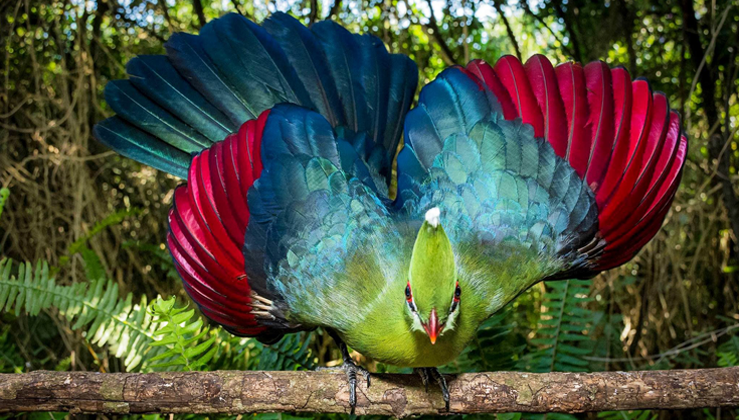
Within its range, this is an unmistakable bird, although often inconspicuous in the treetops. It is 40–42 cm long, including a long tail. The small but thick orange-red bill and a white line just under the eye contrast with the mainly green plumage. It has a tall green crest, which is tipped with white. The eye is brown and the eye-ring deep red. In flight, Knysna turaco shows conspicuous crimson primary flight feathers. Sexes are similar, but juvenile birds have a shorter crest without the white tips.
2 / 10
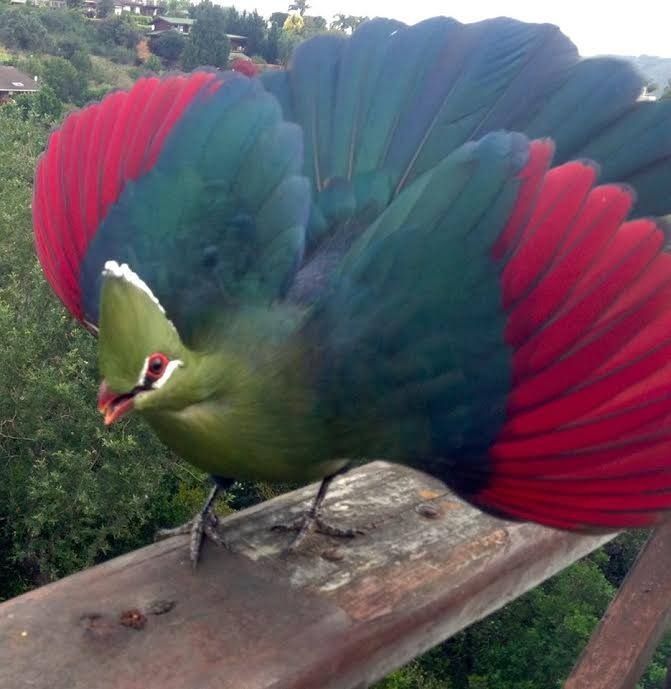
The Knysna turaco is usually seen flying between forest trees, or hopping along branches. It feeds on fruit, insects and earthworms. It has a loud kow-kow-kow-kow call. This bird family is known as Loeries in South Africa, but the international name is Turaco. Turacos (the 10 species of the Tauraco and the 2 of the Musophaga) are the only birds to possess true red and green colour. When you look at most birds, the color you are seeing is a reflection produced by the feather structure. The turaco’s red pigment (turacin) and green pigment (turacoverdin) both contain copper. In fact, if you stirred a glass of water with a red turaco feather, the water would turn pink! In museum species, the pigments deepen with age because the copper begins to oxidize.
3 / 10
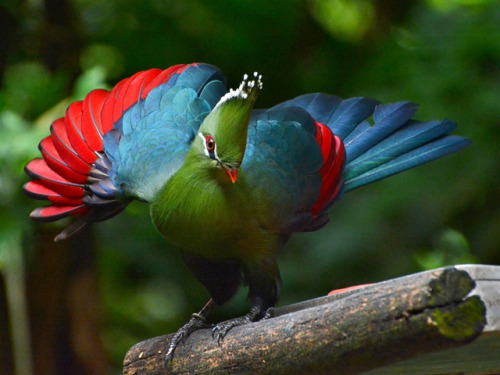
These birds manage to maintain their colours throughout the year. The Knysna Loerie is thought to use its red wing feathers to escape predators. Indeed, when it flies, the predators tend to focus on the most visible colour and follow the red patch. As the Loerie lends and folds its wings, the red feathers of the wings become invisible and the Loerie has a chance of escaping unseen.
4 / 10
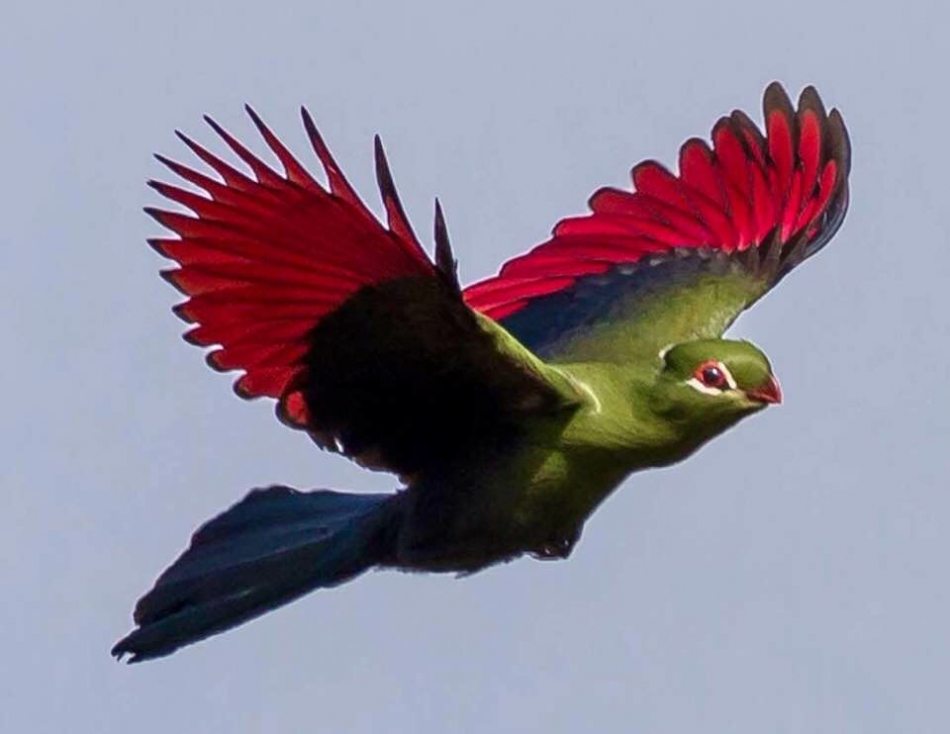
Some facts about Knysna Turaco What type of animal is a Knysna turaco? The turacos belong to the family Musophagidae in which the go-away birds and the plantain eaters are also included. In South Africa, the turacos are often compared to the go-away birds and are popularly known as Loeries. They live in the mature evergreen forests of southern and eastern South Africa and West Africa.
5 / 10
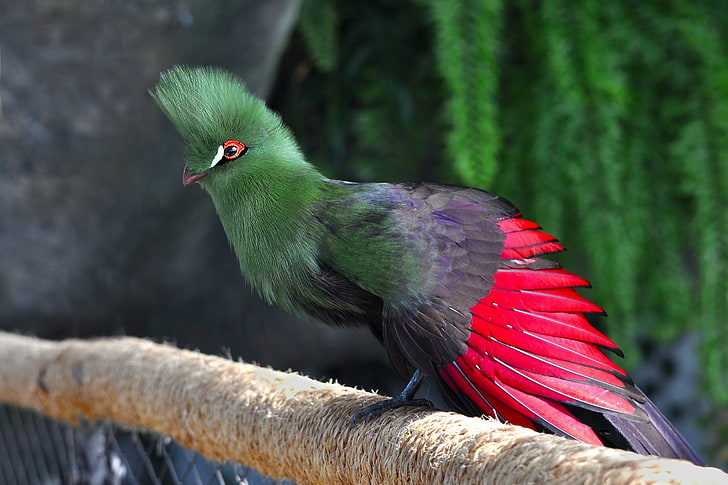
What class of animal does a Knysna turaco belong to? The Knysna turaco (Tauraco corythaix) is a bird. It belongs to the class Aves and the family Musophagidae. How many Knysna turacos are there in the world? The population size of the Knysna turaco (Tauraco corythaix) is not known as there are many species of turacos. According to the IOC World Bird List (version 10.1), there are 23 species of turaco in six genera.
6 / 10
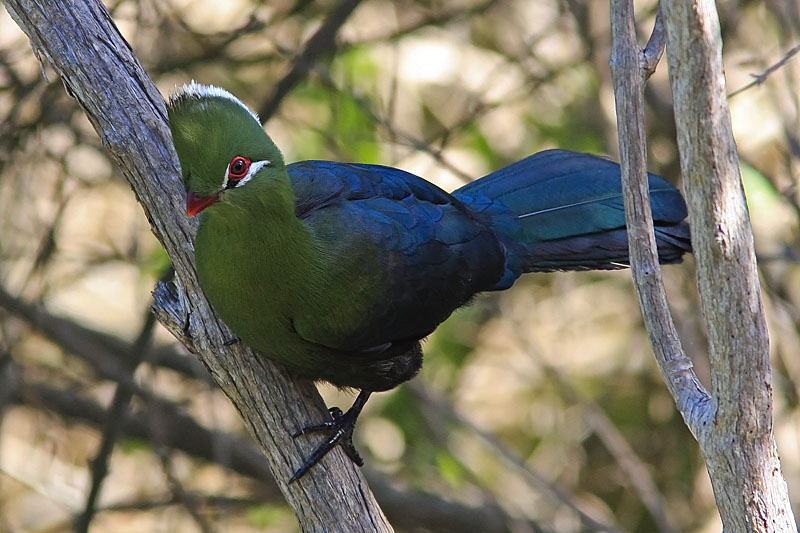
Where does a Knysna turaco live? The Knysna turaco (Tauraco corythaix) is a species of turaco that lives in the woods and mature evergreen forests of southern and eastern South Africa, as well as Swaziland. They are also found in Mozambique and all the Cape’s- Northern Cape, Eastern Cape, and Western Cape.
7 / 10
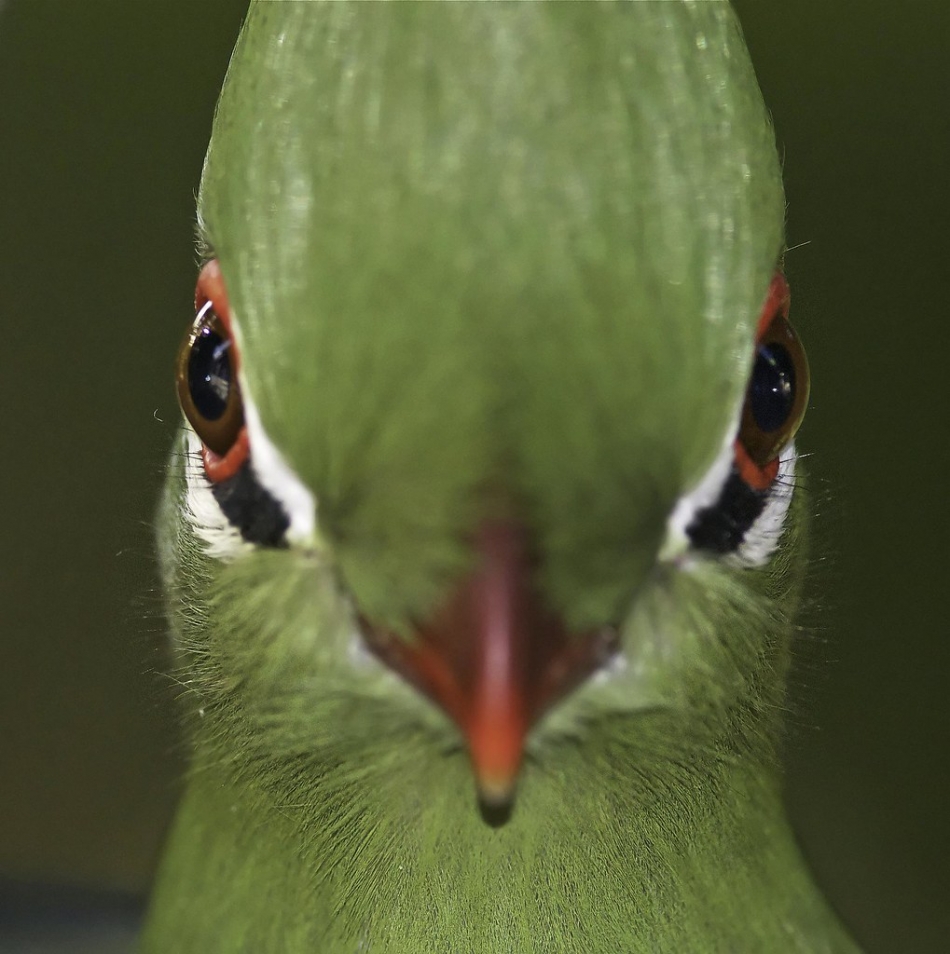
What is a Knysna turaco’s habitat? The resident breeder of mature evergreen forests in southern and eastern South Africa and Swaziland is the Knysna turaco (Tauraco corythaix). They love the dense and broad-leaved evergreen forests. The Knysna lourie is a non-migratory bird. The Knysna turaco is energetic during the day and is usually seen flying between forest trees or leaping from one branch to another.
8 / 10
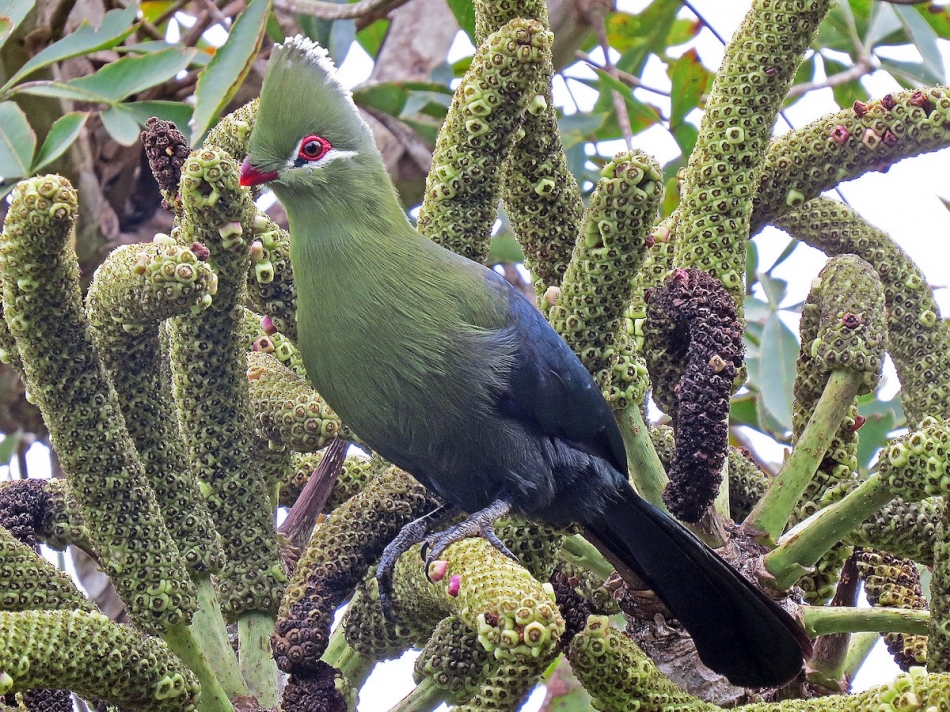
Who do Knysna turacos live with? The Knysna turaco (Tauraco corythaix) is a social bird species often moving around in small noisy flocks. They build their nest alone or in pairs during the breeding season. They are territorial and usually stay and move around with their family groups or pairs. How long does a Knysna turaco live? In captivity, the Knysna lourie bird is known to live for 30 years, while in the wild, it is not known.
9 / 10
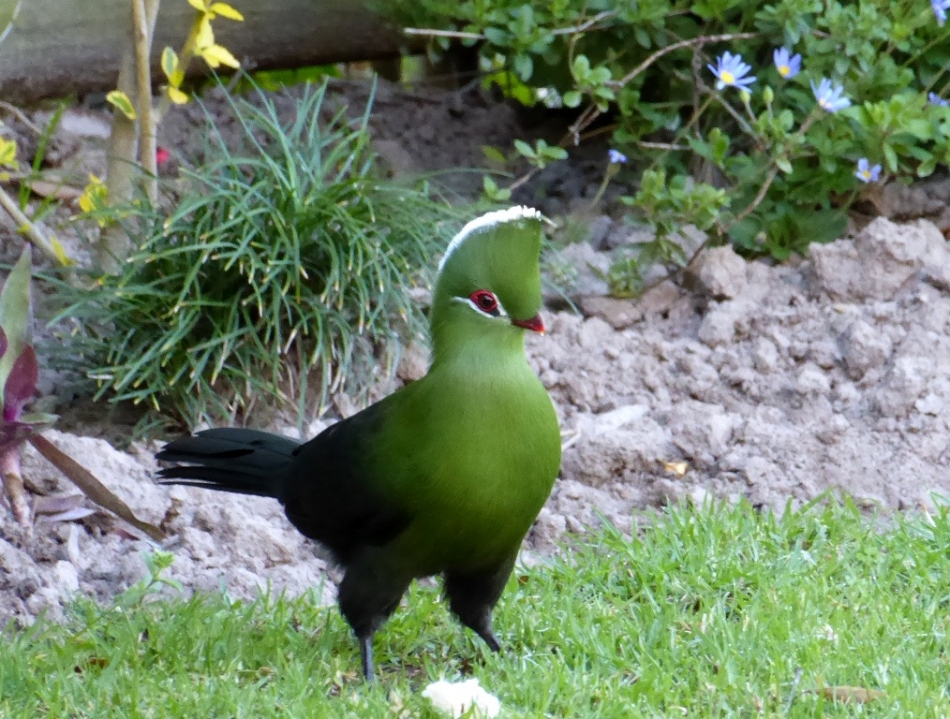
How do they reproduce? The Knysna turaco (Tauraco corythaix) follows monogamous breeding. Their breeding time varies according to location. The female turacos lay only two eggs. The eggs are laid in a shallow platform nest made from sticks and placed in a tree or clump of creepers. Both the parents incubate the eggs for 20-24 days. For 22 days the hatched chicks stay in the nest. They fly when they are 28 days old.
10 / 10
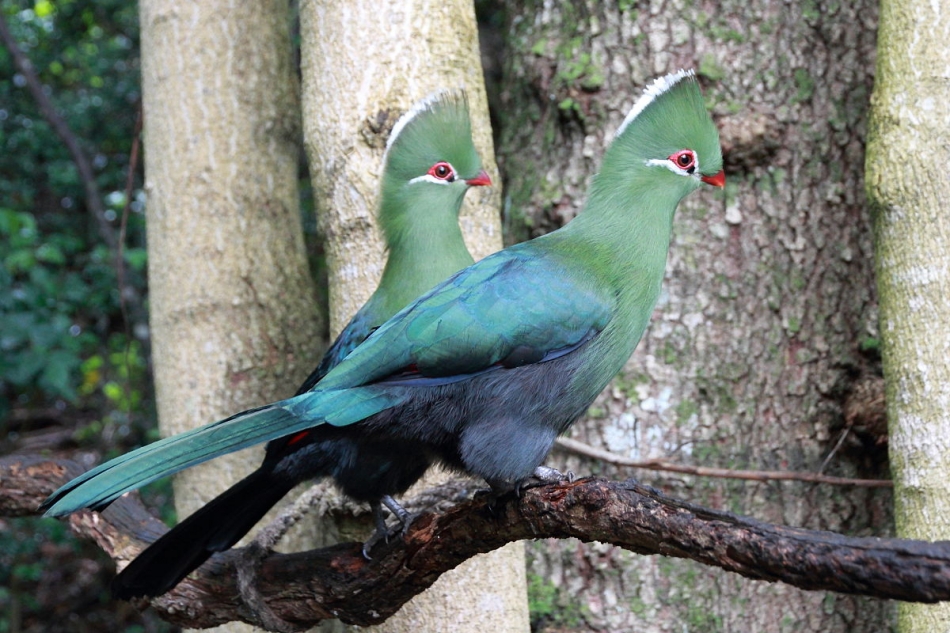
The young bird species become independent when they are three weeks old.

